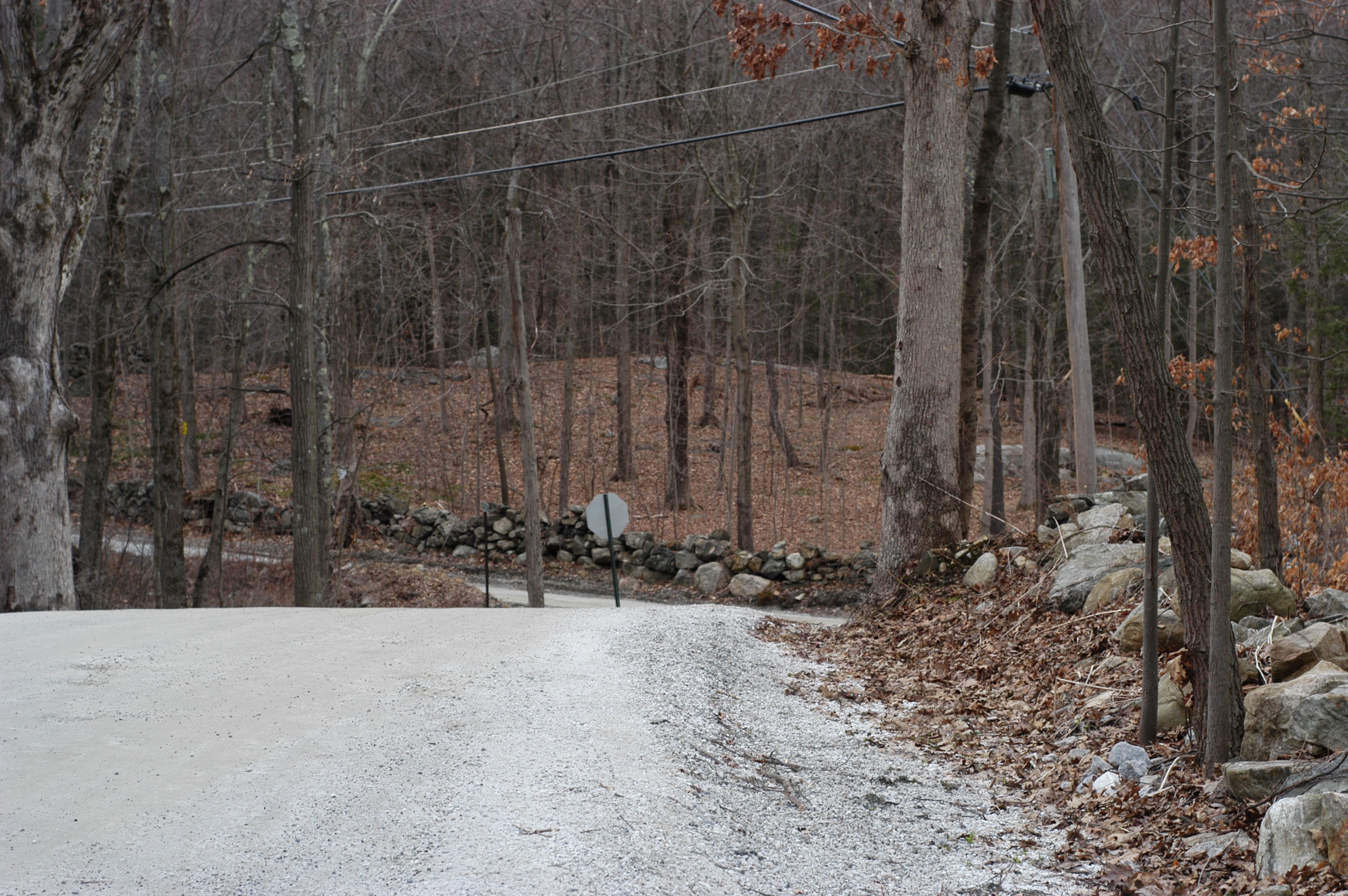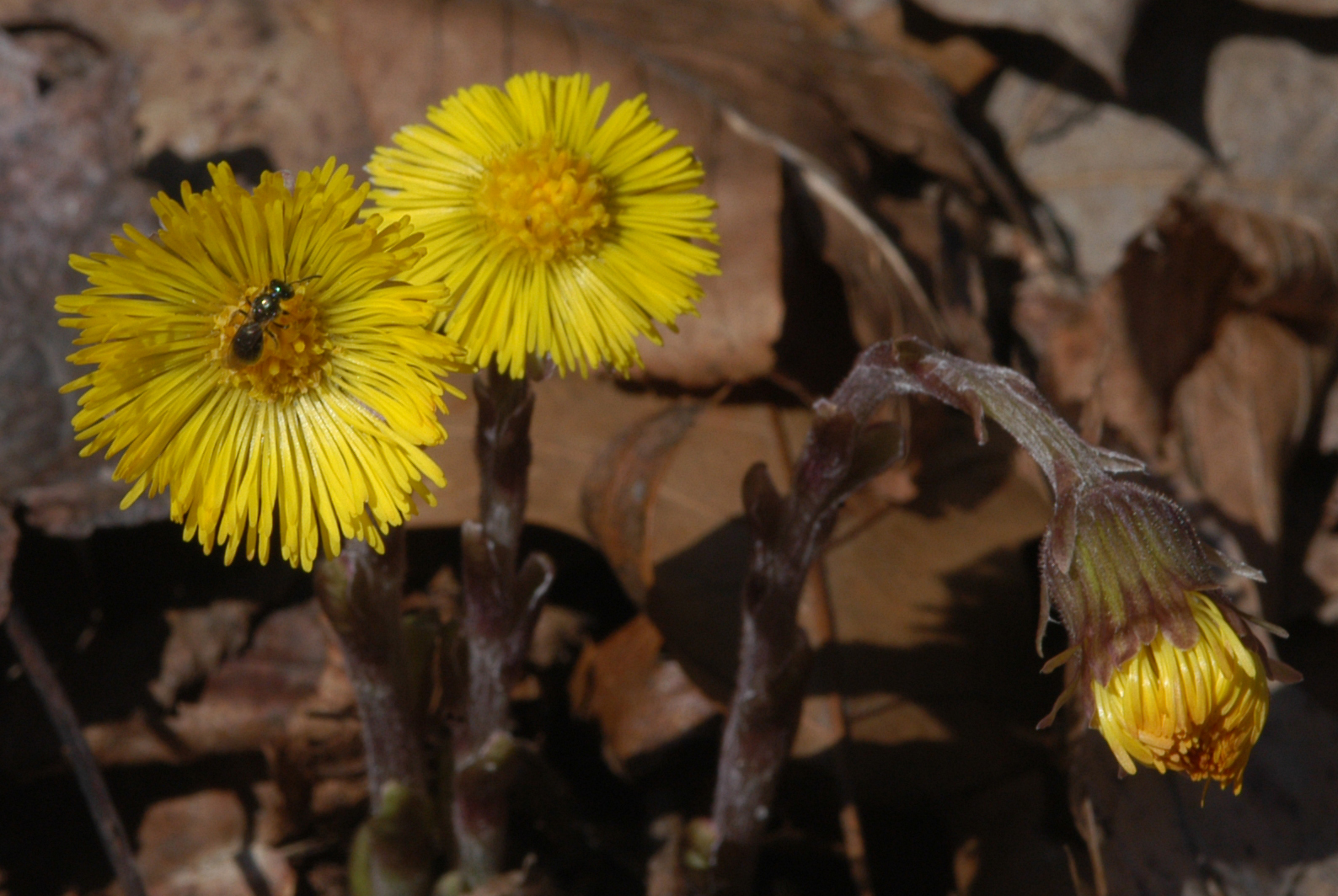|
Habitats
Terrestrial System. Cultural
Subsystem-- Unpaved road/path community
|

|
|
|
Ice Pond Road is unpaved in
for most of the length of the Ice Pond Conservation Area.
|
|
Physical Setting: This community occurs in narrow bands
formed by the unpaved portion of Ice Pond Road (1 km or 0.6 mi
long and 20 m or 65 feet wide) and the several paths (8 km or 4.9
mi long and 10 m or 32.8 feet wide) which traverse the site. The
main path running west to east from Ice Pond Road down to the Ice
Pond was paved, but with the cessation of vehicular traffic, the
pavement is now broken up and has largely disappeared. It is now
more of a path than a paved or unpaved road. There is another
former road on the west slope of the northeastern hill through
Hemlock-northern hardwood forest, but there is no evidence this
road was ever paved. It too is closed to vehicular traffic,
except A.T.V.'s. The Unpaved road/path community as a whole is
actually quite large, covering approximately 280,000 square
meters (69 acres) and ranges in altitude from 135 to 250 meters
(442 to 820 feet) above sea level.
Substrate and
Hydrology: The substrate of the mostly unpaved Ice Pond Road
(pictured above left) is artificially formed by the regular
deposition of fresh road base, apparently composed of crushed
marble. The outwash from the road base undoubtedly influences the
chemistry of adjacent soils (probably raising the pH). The
substrate of the paths (excluding the formerly paved road down to
the Ice Pond) is like that of the substrate of the communities
through which they pass. For the most part the hydrology of this
community is artificially influenced by grading, ditching and
compaction.
|
 |
|
Colt's foot (Tussilago
farfara)
|
Biota:
The vegetation of this
community is in a dynamic state of succession. Along the unpaved
road, succession is constantly reset by human intervention such
as mowing, bushwacking and perhaps herbicide application. The
most-disturbed and open areas are along the unpaved road and
support typical species of disturbed roadsides such as colt's
foot (Tussilago
farfara), dandelion
(Taraxacum officinale),
Canada bluegrass (Poa
compressa) and many
others. Along the unmaintained paths the vegetation is changing
from herbaceous species typical of highly disturbed areas to
predominantly trees and shrubs like those in the community
through which they pass. Several Invasive
species that prefer this habitat are present here: barberry
(Berberis thunbergii),
wineberry (Rubus
phoenicolacious),
multiflora rose (Rosa
multiflora) and others.
Cultural:.This
community is totally artificial and dependent on human
intervention. Left undisturbed, it would most likely revert to
that of the community through which it passes, except where the
topography has been drastically altered, such as grading and
ditching. The paths west of the Ice Pond are used by hikers,
rock-climbers, fishermen and bicyclists. Those east of the Ice
Pond are used by the same groups of people with the addition of
A.T.V.'s.
|